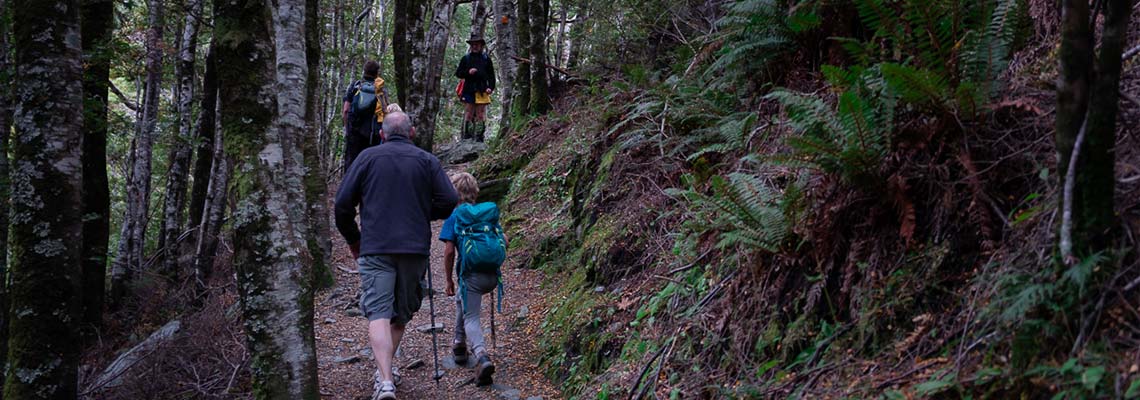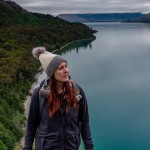What You Need To Prepare Before a Family Single Day Hike in New Zealand
Congratulations on choosing to get outdoors and tramp with your family. Tramping in New Zealand continues to be a great family activity and Aotearoa has some of the most incredible landscapes to explore.
If you are a beginner walker or haven’t hiked with your children before, there are a few things to consider before stepping into the great outdoors.
This article will cover:
Choosing the right walk and location for your family
Preparing before you head out
Choosing the right walk for your family
Choosing the right track to start off on is absolutely crucial. Fun and enjoyment are the key priorities as a beginner tramper, and you want to build a child's love of the outdoors first. The further benefits of hiking such as the challenge, connection, and developing perseverance, mental toughness, and resilience can come later
Finding flora and fauna on your tramp is a great way to engage the children. Not only can it be nature's best scavenger hunt, kids will start to learn how they can impact the environment, in both positive and negative ways. Raising more environmentally conscious kids will help make sure the outdoors will be available for generations to come.
So, the next time you are outdoors, take a look at the birds, animals, insects and plant life that surround you. Apps such as NZ Trees or Plantsnap can also help you identify what you find.
Choose a fun track
Find a walk or track that has some interesting features such as waterfalls, viewpoints, coastal views, historical remnants or a hut for lunch. This will help motivate the children to keep going and give them something to aim for.
Getting outdoors is about the journey and the beautiful things you can see along the way, but it doesn’t hurt if there is a destination to look forward to.
Complete Outdoors is based in Redwood, Canterbury so here are a few hikes we enjoy
Canterbury Walks
- Godley Head Track (3-4 hours loop)
- Sugarloaf Circuit, near Sign of the Kiwi (1 hour loop)
- Rapaki Track (1.5-2 hours)
- Harry Ell Walkway (45 mins one way - can join up to more Port Hills tracks from here)
- Quail Island (2-3 hours return)
- Lake Daniell (5-6 hours return with a hut and campsite halfway)
- Devils Punchbowl Falls, Arthur’s Pass (1 hour return)
South Island Walks
- Washpen Falls, Canterbury (2 hours)
- Hooker Valley Track, Mt Cook (3-4 hours)
- Day walk to Giants Gate Falls, Milford Sound (3 hours)
- Franz Josef Glacier Track (1.5 hours)
- Coal Creek Falls (1 hour)
- A day walk on the Abel Tasman Track (water taxi drop off, hike, then pick up)
- Packhorse Hut, Christchurch (2-4 hour return, depending on route choice)
- Rocky Mountain Track, Wanaka (3-4 hours)
North Island Walks
- Putangirua Pinnacles, Wairarapa (2 hours)
- Mt Maunganui Summit (1-2 hours)
- Mt Kaukau, Wellington (1.5 hours)
- Blue Springs, Waikato (from 30 mins to 3 hours, depending on route choice)
- Taranaki Falls Track, Tongariro (2 hours)
- Wilkies Pools, Taranaki (1-1.5 hours)
- Kitekite Falls, Auckland (1 hour)
Consider the fitness ability of your family and children
If this is the first time that you or your family have hiked, it is recommended to choose an easier track to start off with. Tackling something that is too challenging first up may not help your family develop a lifelong love for tramping.
This does not mean your hike has to be a flat walk in the forest. Most kids with a decent amount of energy are perfectly capable of walking an uphill or undulating track. A lot of the time when they say they are tired, they are actually bored. If you choose a track with rocks to climb, swing bridges to cross or lots of bush where they can’t see an end point in the distance, this is often enough to keep their minds active and avoid boredom.
Starting distances for families
If your children are young or you have beginner fitness levels, we recommend a starting hike of 1-2 hours
If your children are school aged or older and generally active, consider a 2-4 hour tramp on a beginner to moderate track
Note: Timings for walking tracks are generally for beginner to moderately fit adults and are for walking time only. You will need to allow more time for younger children and add on snack breaks, lunch stops, toilet stops, photos etc. So if you are planning your day, for a 3-4 hour return walk, allow 5-5.5 hours approximately back to the carpark.
Understanding the type of track
One of the best types of track to start on is a Department of Conservation (DOC) track or Council trail. They are generally well maintained and there is plenty of signage to help you on your way. You need to consider the fitness ability of your walkers as well as your backcountry experience. Ideally choose a well formed track first (although these can be challenging too).
Here is a quick guide to help you decipher DOC terminology:
Easy access short walk:
These are wheelchair and stroller friendly so are an easy way to explore the outdoors. They are generally very short tracks and are great for toddlers and preschoolers to start to explore on their own two feet They are up to an hour long
Easy short walk:
These are similar to the easy access short walks but may have stairs so they are not fully accessible to strollers and wheelchairs. Sometimes these tracks are not particularly interesting, so if you practice on these tracks with your children and they get bored, it doesn’t mean they won’t be good hikers, they may just need more stimulation.
Easy walking track:
Easy walking tracks are easy in the sense that they are well-formed tracks with very defined paths so no navigation is required and, in the big scheme of things, they are easy compared to advanced tramping tracks. However, do not think that easy tracks are flat or will not require effort. While these will not be steep uphill tracks that go on for hours, there will be hills that make your lungs burn sometimes (depending on the trail).
You will need to do your research further than just choosing an “easy walking track” to determine if this walk is for you.
Intermediate/Great Walk tracks:
Clear signage and markers are used to map out the route. These walks are usually longer than the easy walking tracks but do not require navigation skills. There may be steep and rocky sections on this track.
The above categories are great places to start for beginner/moderately experienced family hikers. Well-formed tracks that you do not need navigation skills for are ideal. The following two categories require more experience and expert skills:
Advanced tramping tracks and expert routes:
These are challenging hikes, with mostly unformed tracks marked with orange triangles on trees or marker poles. Expect river and stream crossings. Navigation and backcountry survival skills are required.
Where to find the best information on which track to hike
Department of Conservation website: This is a great place to start to your research. It often has good maps but but may lack detailed information on what the track is actually like, how hard it would be for a family compared to a single person, and photos to help you choose a track.
Blogs: Blogs have great articles written by real people who have actually experienced the walk. They often go into great detail and include lots of photos to give you an idea on whether this is right for your family. Do remember that their personal experience may differ to yours, but it should give you more detailed insight. If you search for “track with kids”, you may also get detailed family information too.
Tourism websites: A local tourism website will help you find walks with awesome highlights such as waterfalls or swing bridges. These will often be well-formed tracks suitable for tourists, so a good starting point for your tramping list.
Friends and family: Ask friends and family with kids of a similar age or ability which tracks are their favourites and which to avoid.
Facebook groups: There are lots of Facebook groups for keen outdoorsy types who are very generous with advice. For example, Outdoorsy Mama is a very friendly community of families who are always posting great walks they have completed with their kids and providing advice to those who ask.
Tramping clubs: Your local tramping club will easily be the best place to help you choose the best tracks in your region. They often organise group events if you don’t want to hike alone.
Summary:
- Top tips for choosing the right track
- Choose an interesting track
- Find a tramp that is suitable for all members of your group
- Don’t tackle anything too hard to start with, but remember that small challenges will keep everyone interested
- Do your research before choosing your track to ensure the best chance for success



































